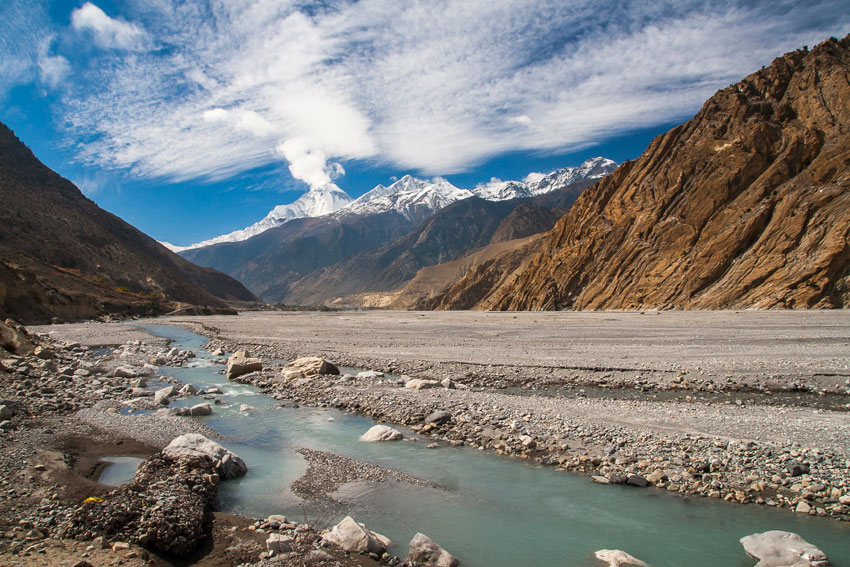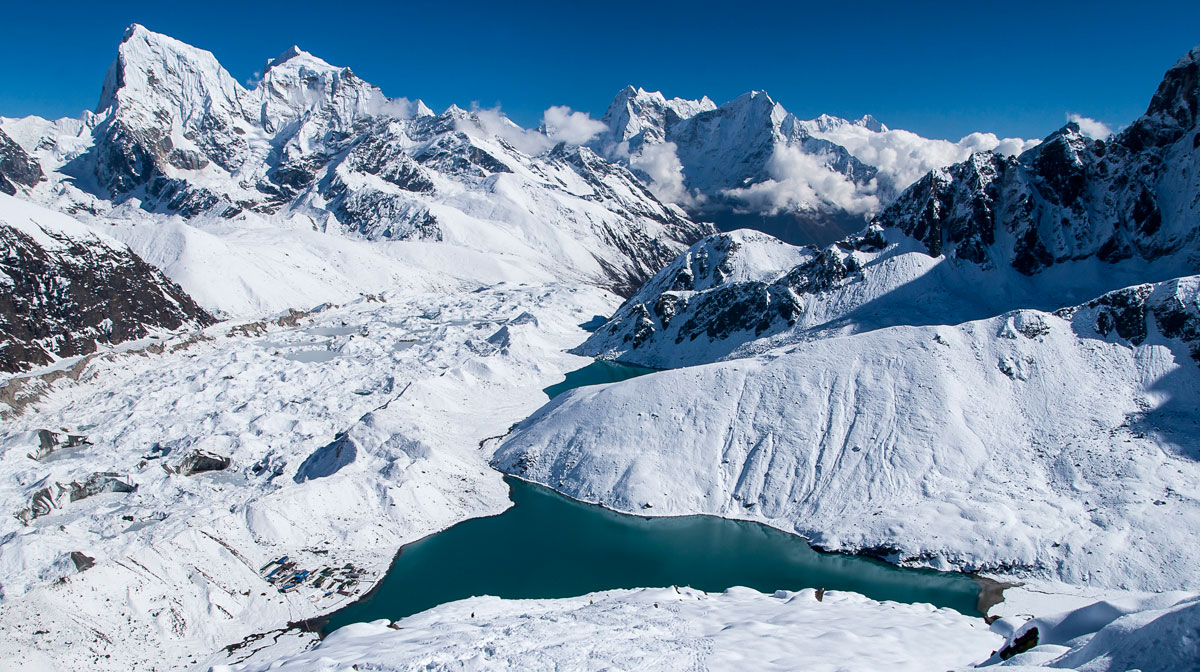EVEREST GLACIERS MAY DISAPPEAR BY 2100
A beautiful view of the Himalayas from Gokyo Ri. (Getty Images | iStockphoto)
Glaciers in the Everest region of the Himalayas could shrink at least 70 per cent or even disappear entirely by the end of the century if greenhouse-gas emissions continue to rise, warned scientists, May 27. A PTI report.
A team of researchers in Nepal, France and the Netherlands, have found that the Everest glaciers could be very sensitive to future warming, and that sustained ice loss through the 21st century is likely.
“The signal of future glacier change in the region is clear: continued and possibly accelerated mass loss from glaciers is likely given the projected increase in temperatures,” said Joseph Shea, a glacier hydrologist at the International Centre for Integrated Mountain Development (ICIMOD), Kathmandu, and leader of the study.
The glacier model used by Shea and his team shows that glacier volume could be reduced between 70% and 99% by 2100.
The results depend on how much greenhouse-gas emissions continue to rise, and on how this will affect temperature, snowfall and rainfall in the area, researchers said.
“Our results indicate that these glaciers may be highly sensitive to changes in temperature, and that increases in precipitation are not enough to offset the increased melt,” Shea wrote in the study published in The Cryosphere journal.
Increased temperatures will not only increase the rates of snow and ice melt, but can also result in a change of precipitation from snow to rain at critical elevations, where glaciers are concentrated.
Together, these act to reduce glacier growth and increase the area exposed to melt, researchers said.
Glaciers in High Mountain Asia, a region that includes the Himalayas, contain the largest volume of ice outside the polar regions.
The team studied glaciers in the Dudh Kosi basin in the Nepal Himalaya, which is home to some of the world’s highest mountain peaks, including the 8,848 meter high Mt Everest, and to over 400 square kilometers of glacier area.
“Apart from the significance of the region, glaciers in the Dudh Kosi basin contribute melt-water to the Kosi River, and glacier changes will affect river flows downstream,” said Shea.
Changes in glacier volume can impact the availability of water, with consequences for agriculture and hydropower generation, researchers said.

While increased glacier melt initially increases water flows, ongoing retreat leads to reduced melt-water from the glaciers during the warmer months, with greatest impact for the local populations before the monsoon when rainfall is scarce.
Glacier retreat can also result in the formation and growth of lakes dammed by glacial debris. Avalanches and earthquakes can breach the dams, causing catastrophic floods that can result in river flows 100 times greater than normal in the Kosi basin, researchers said.
To find out how glaciers in the region will evolve in the future, the team started by using field observations and data from local weather stations to calibrate and test a model of glacier change over the past 50 years.
“To examine the sensitivity of modeled glaciers to future climate change, we then applied eight temperature and precipitation scenarios to the historical temperature and precipitation data and tracked how glacier areas and volumes responded,” said study co-author Walter Immerzeel of Utrecht University in the Netherlands.
Part of the glacier response is due to changes in the freezing level, the elevation where mean monthly temperatures are zero degrees Celsius.
“The freezing level currently varies between 3200m in January and 5500m in August. Based on historical temperature measurements and projected warming to the year 2100, this could increase by 800-1200m,” said Immerzeel.
“Such an increase would not only reduce snow accumulations over the glaciers, but would also expose over 90% of the current glacierized area to melt in the warmer months,” Immerzeel added.


